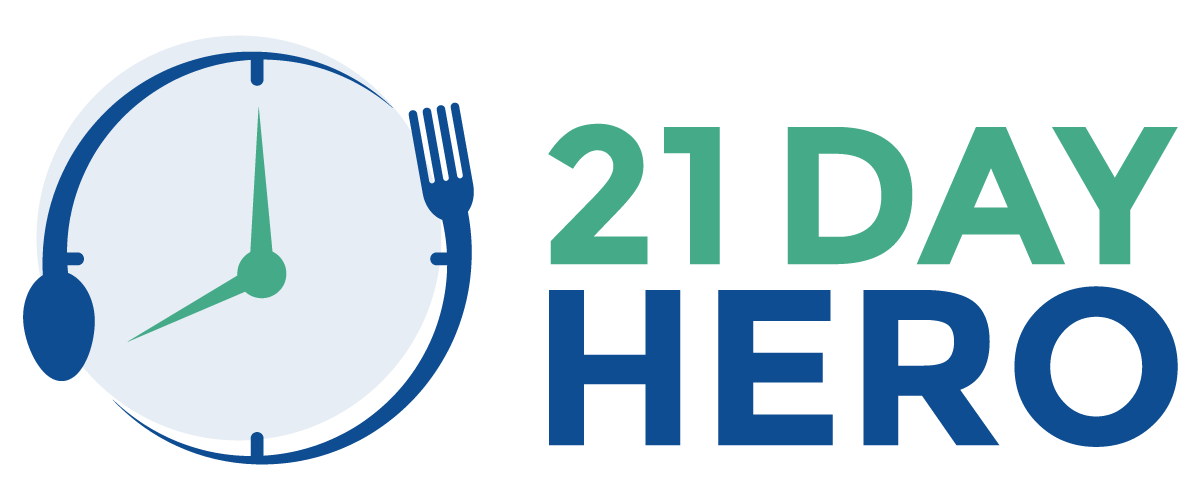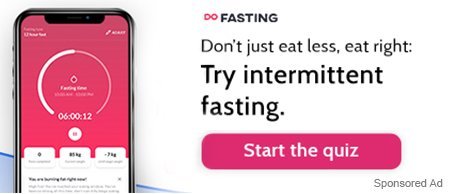16/8 Intermittent Fasting | 18/6 Intermittent Fasting | 5:2 Intermittent Fasting | 20/4 intermittent fasting | 23/1 Intermittent Fasting | 24 hr Fast | Circadian Rhythm Fasting | Extended Intermittent Fasting | Overnight Fasting | Alternate Day Fasting
Lately, intermittent fasting has gained more popularity as an effective diet pattern that helps in easy calorie restriction, weight loss, and cardiometabolic health. Unlike any other diet pattern, intermittent fasting focuses on when to eat rather than what to eat. There are various types of intermittent fasting that allow you to choose the best schedule based on your preference.
What are the different types of intermittent fasting?
- 16/8 Intermittent Fasting
- 18/6 Intermittent Fasting
- 14/10 Intermittent Fasting
- 5:2 Intermittent Fasting
- 20/4 Intermittent Fasting A.K.A. The Warrior Diet
- 23/1 Intermittent Fasting A.K.A One Meal A Day
- 24 Hr Fast A.K.A Eat Stop And Eat Method
- Circadian Rhythm Fasting
- Extended Or Prolonged Intermittent Fasting
- Alternate Day Fasting
Intermittent fasting (IF) is all about eating at a specific period of time. According to this diet regime, fasting for a certain period of time every day can improve your health greatly.
During prehistoric times, our ancestors survived without eating food for long periods; because the food was not readily available, and they had to hunt for their living. Regular periods of fasting kept them healthy and energetic. It means that our body metabolism has evolved to sustain without food for several days.
To know more about what intermittent fasting is and how it works, read our article A complete guide to intermittent fasting.
Intermittent fasting is a great way to keep yourself in optimal health. Let us explore different types of intermittent fasting and how you can select the best fasting schedule for yourself.
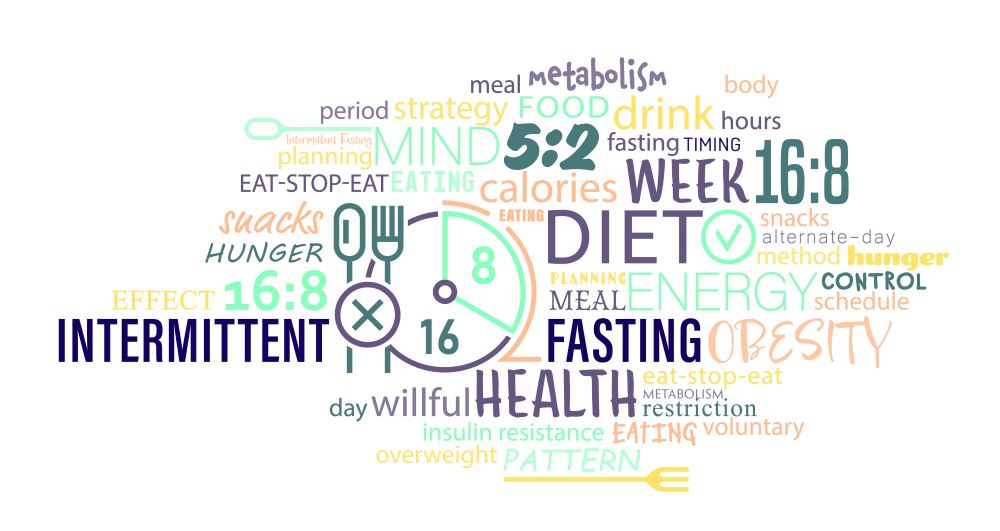
10 Types of Intermittent Fasting
1. 16/8 Intermittent Fasting
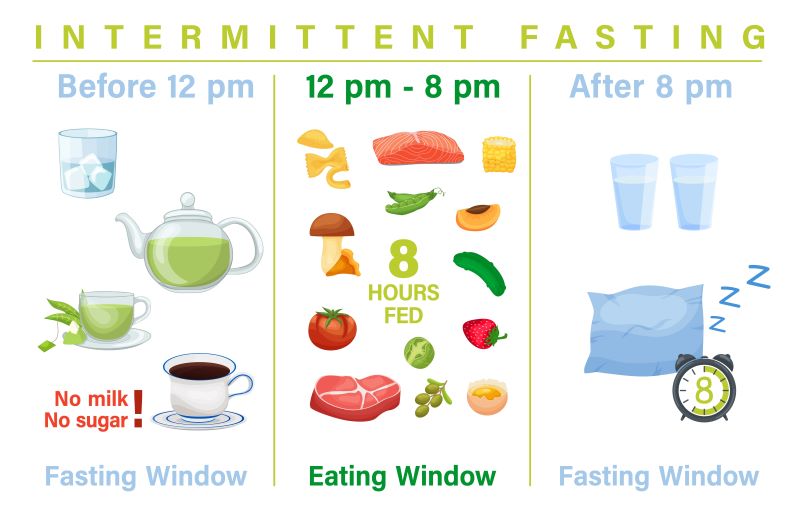
In 16/8 Intermittent fasting, you can fast for 16 hours and restrict your eating window for 8 hours. This is one of the most famous intermittent fasting methods followed successfully by many people.
You can choose an eating window based on your routine. It can be from 8 am to 4 pm, or 10 am to 6 pm, depending on your routine. Most people prefer to skip breakfast and continue with overnight fasting to meet their 16-hour fasting schedule.
If you are looking for an athletic body or weight loss, 16/8 would be the best. Because studies say, 16/8 intermittent fasting helps to decrease your body fat, helps in weight loss, improves heart health and health-related biomarkers.
You cannot expect immediate results in any diet as your body needs time to get adjusted, and everyone has a different metabolism. A minimum of 21 days of intermittent fasting is required to see the results.
A 12-week randomized clinical trial was conducted on intermittent fasting that showed significant weight loss in both men and women. There was also a decrease in fat mass, lean mass, fasting insulin, and hemoglobin levels.
Skipping your breakfast after an overnight fast makes it easy for you to achieve 16-hour fasting. However, if you find it hard to skip breakfast, you can start your day with non-caloric beverages such as green tea or black coffee. These beverages make you feel fuller and allow you to continue your fast.
Most importantly, include healthy food in your eating window. Include maximum proteins, fewer carbs, more vitamins, and minerals in your diet. Choose more fruits, vegetables, fish, and chicken.
See the Full guide here – 16/8 Intermittent Fasting Guide.
2. 18/6 Intermittent Fasting
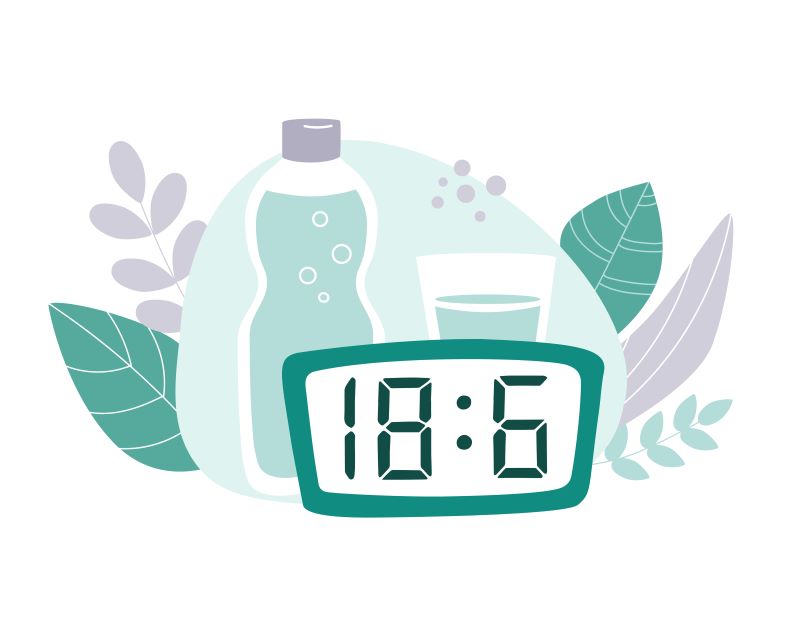
In 18/6 intermittent fasting, you are fasting for 18 hours, and the eating window is for 6-hours. In this type of intermittent fasting, you’re increasing your fast for 2 more hours when compared with 16/8. It makes a huge difference because your body gets extra 2 hours to burn more calories.
If you are new to the concept of fasting, then experts suggest following 16/8 intermittent fasting for a few months before moving to 18/6. Sudden fasting for 18 hours will make you feel weak, and you might feel less motivated.
You can choose 10 am-4 pm, 12 pm-6 pm, or any other schedule, as long as there is a 6 hours eating window after 18 hours of continuous fasting. Skipping breakfast and having black coffee, green tea or just water in the morning can help you maintain this schedule.
Make sure you have a healthy meal in your eating window and avoid junk and processed foods. Try including foods rich in antioxidants and fiber such as spinach, oranges, broccoli, mushroom, and sprouts.
Keep yourself hydrated during fasting by drinking more water. Avoid consuming packed fruit juices, diet soda, and diet drinks during fasting. You can drink herbal tea, green tea, and black coffee without sugar.
According to the studies, intermittent fasting influences human physiological and biochemical parameters that are essential for athletic performance. Intermittent fasting helps to decrease body weight fastly in non-athletic people. It is also reported that fasting can alter protein, lipid, and glucose metabolism and is associated with hormonal responses.
See the full guide here – 18/6 Intermittent fasting guide or 19/5 Intermittent fasting guide.
3. 14/10 Intermittent Fasting
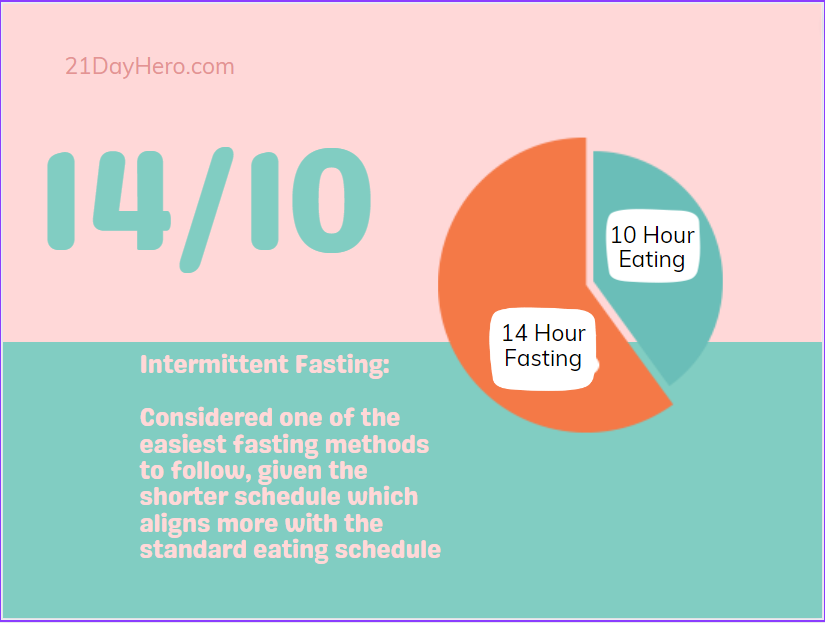
Generally, in 14/10 intermittent fasting, you have to fast for 14 hours and your eating window is 10 hours. You can eat between 9 AM and 7 PM and fast between 7 PM to 9 AM. Many find it to be an easy-to-follow eating pattern.
This is becoming one of the easier fasting methods to follow, as it fits the schedule best for most people. You may not achieve the same benefits of a 16+ hour fast, but this is a great place to start!
With 14/10 fasting schedule, if you are an early bird, you can set 7 AM to 5 PM as your eating window and 5 PM to 7 AM would be your fasting window. There is also another option many prefer 8 AM to 6 PM as the eating window and 6 PM to 8 AM fasting window.
During your eating window, you can have your usual meals and snacks. In the fasting window, you have to restrict your calorie intake completely. However, you can drink water or green tea, or black coffee without sugar.
You can see a complete guide to 14/10 Intermittent fasting – HERE.
4. 5:2 Intermittent Fasting
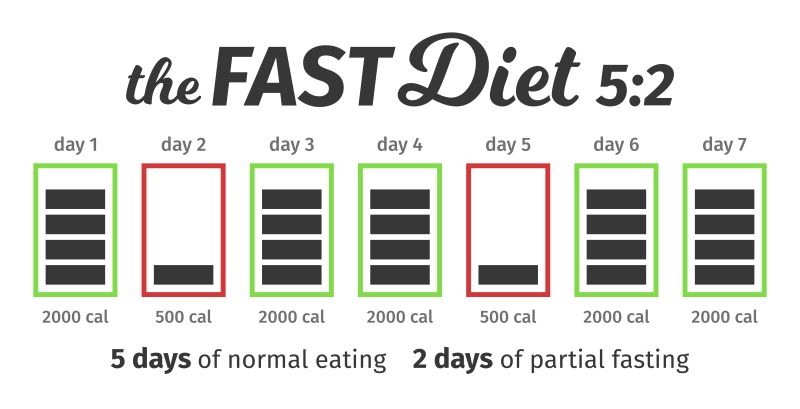
In the 5:2 intermittent fasting, you eat a regular diet for 5 days and follow fasting for 2 days. This diet is also known as a fast diet.
During the fasting days, it is recommended that women can consume 500 calories and men can have 600 calories. For example, you could have a fruit bowl and raw vegetables during the fasting days; avoid eating tomatoes because they may cause acidity. Papaya and watermelon would be the best fruits during fasting because they make you feel full for long hours. Cucumber, carrots, cabbage salad will help you combat hunger.
Your fasting days cannot be consecutive days; you might eat normally every day of the week except Mondays and Thursdays or Tuesday and Thursday or Friday and Sunday.
See the full guide here – 5/2 Diet: A Full Guide.
5. 20/4 intermittent fasting a.k.a. the Warrior Diet
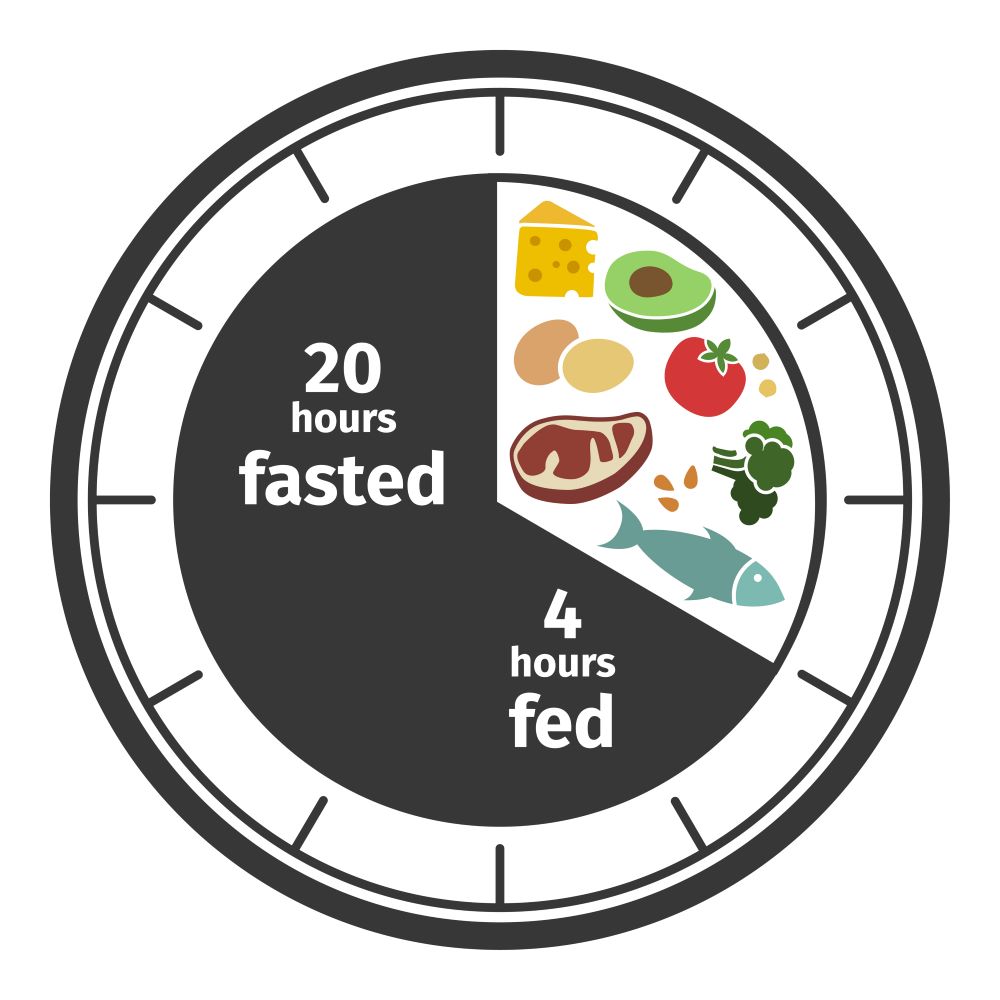
In this method of intermittent fasting, you are on fast for 20 hours, and your eating window is just 4 hours. This diet is also known as the warrior diet.
Keep yourself hydrated, include green tea or coffee during fasting hours. Try to include all essential nutrients like proteins, fats, carbs, and vitamins in your 4 hours eating window. For example, you could eat a bowl of mixed raw veggies and fruits such as carrot, cabbage, avocado, cucumber, sprouts, apple, pear, oranges, watermelons and add a protein source like fish, poultry, or tofu.
Our ancestors followed this when they had to go hunting; they used to come back late in the evening and have a feast of what they had hunted.
See the Full Guide here – The Warrior Diet – 20/4 Guide.
Also, see these 20/4 Fasting Weight Loss Results!
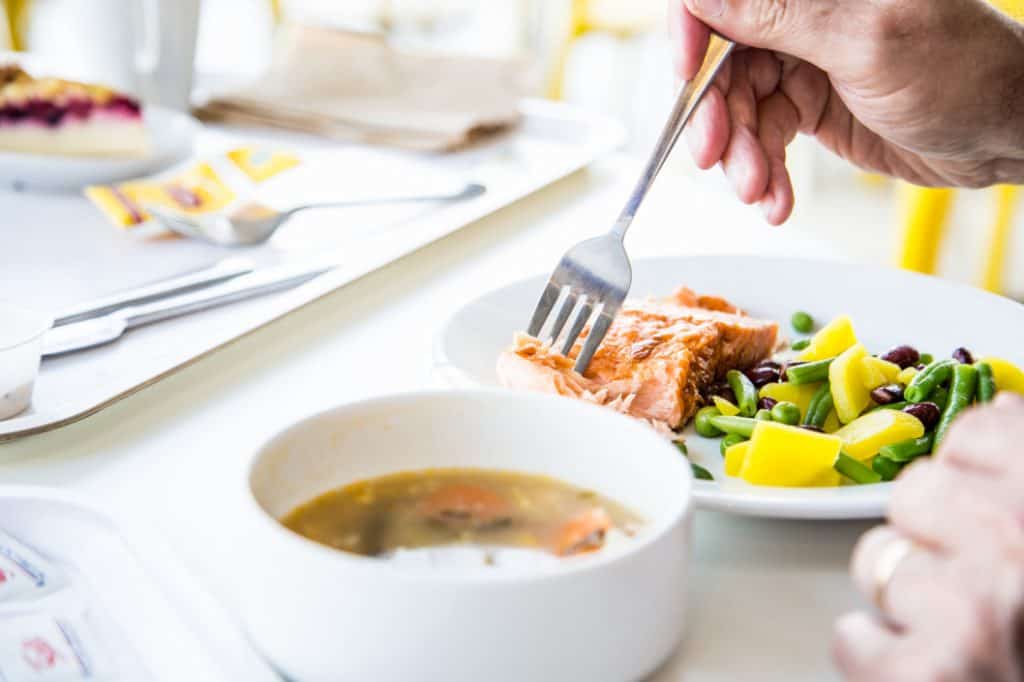
6. 23/1 Intermittent Fasting a.k.a One Meal A Day (OMAD)
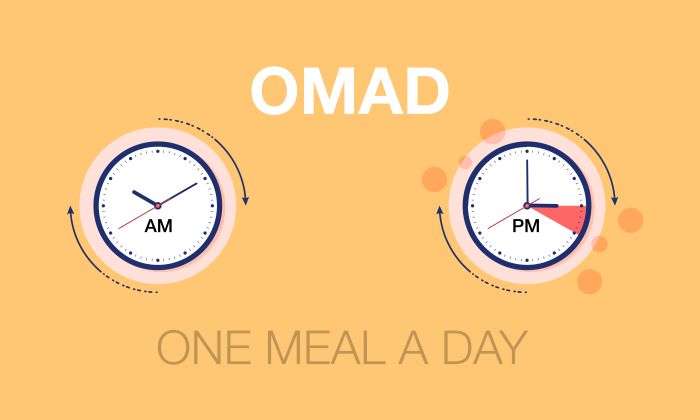
In 23/1 intermittent fasting, you will be fasting for 23 hours and have one meal a day. This is also another most-followed fasting schedule, and it is known as One Meal A Day or OMAD fasting. You can choose whichever meal is preferable, and rest of the day you can fast. Most people prefer dinner as their one meal.
Make sure that you take enough calories in a single meal; it is recommended to consume 1200 calories in your meal. Try to include proteins, vitamins, and nutritionally rich meals. If you have any health complications such as diabetes, high blood pressure, low sugar, or low blood pressure, you can have fruits or raw veggies in your fasting period.
Though it sounds intense, it is not a new way of fasting; most religions follow this type of fasting as a ritual.
People who follow this diet prefer to eat their one meal at dinner time, then fast again until the next day evening. Studies suggest that eating only breakfast will aid in glucose control and reduce the risk of type 2 diabetes. Several other research contradicts it, suggesting that skipping breakfast would be a more beneficial strategy for managing overall calorie consumption.
For a more in-depth OMAD guide, check our One Meal A Day: All You Need To Know About OMAD Diet guide.
7. 24 hr Fast a.k.a Eat Stop and Eat Method
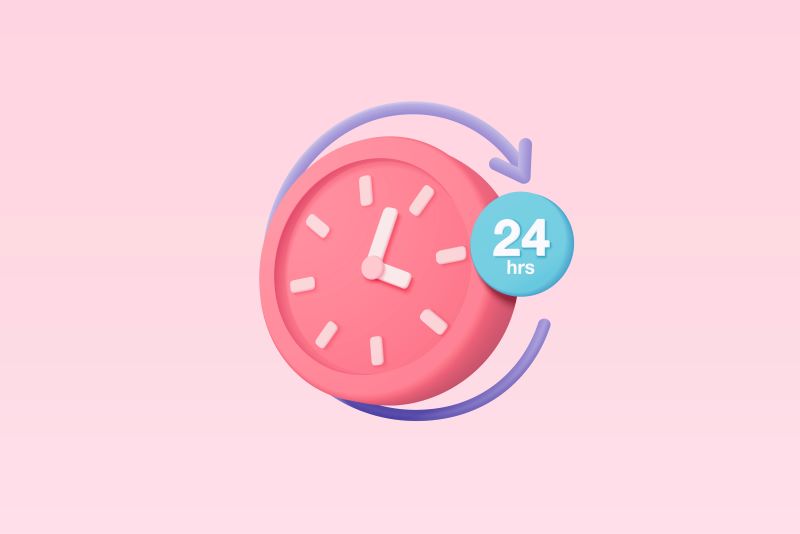
In this fasting method, you are fasting continuously for 24 hours; after 24 hours, you can follow a normal diet. You should do this type of intermittent fasting only once or twice a week. This is popularly known as the Eat Stop and Eat Method. This method helps you to reduce the overall intake of calories by 10%, and aids in weight loss.
By choosing a 24 hr intermittent fasting, you will be skipping both dinner and breakfast. This increases the 24-h energy expenditure; it is one of the more extended fasting types. It is not recommended for people with diabetes, during pregnancy, or low blood pressure because skipping meals for long may lead to higher postprandial insulin concentrations.
See more info in detail here – Eat Stop Eat Guide.

8. Circadian Rhythm Fasting
In this fasting method, your eating window lies between sunrise and sunset. Circadian rhythm fasting is also known as body clock or internal clock, where you align your eating to your circadian rhythm. According to the National Sleep Foundation, your internal clock would be running in the background of your brain. The cycles between sleepiness and alertness at regular intervals are popularly known as the sleep and wake cycle.
Our body is designed to follow the internal clock that runs 24 hrs each day, and it regulates the energy levels based on the rhythm of day and night.
Although this is a well-known pattern of intermittent fasting, success entirely depends on what you eat and where you live. In some countries, sunrise and sunset are not seen in a regular pattern; this fasting method is not recommendable in such places.
Read the full guide here – Circadian Rhythm Fasting Guide.
9. Extended or Prolonged Intermittent Fasting
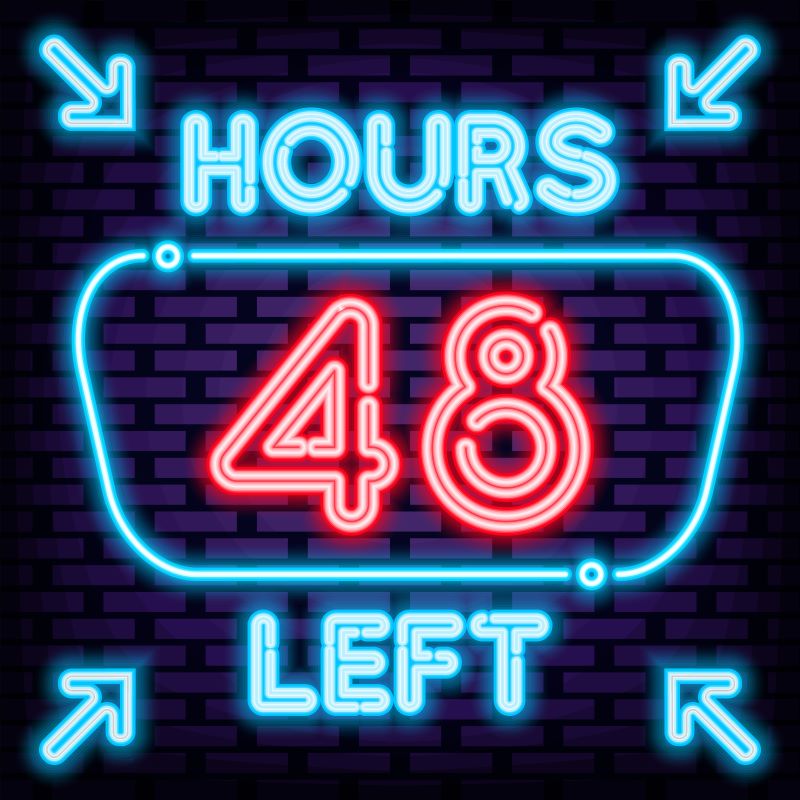
In this type of intermittent fasting, you are fasting for more than 24 hours; you might choose to fast for 48hours or 72 hours. It’s not recommended to fast for more than 96 hours at a stretch. You should practice extended fasting only once a month. It would be advised to consult your doctor and ask for advice on whether you can take up this kind of fasting.
Keep yourself hydrated with lots of water. You can also include herbal tea, green tea, and black coffee.
Extended intermittent fasting is not recommended for people with health concerns such as diabetes, blood pressure, pregnancy, and breastfeeding mothers. Also, if you are not used to fasting, then this would be a tough choice.
For a more in-depth extended fasting guide check: Prolonged Fasting 101: How To Do It & Are The Benefits Worth It?

10. Alternate Day Fasting
In this fasting method, you have to fast every other day. This schedule is recommended if you don’t like daily diet restrictions.
In this, you fast for a day and eat normally the next day. Some people prefer to fully fast on their fasting days, skipping any food and having only zero calorie beverages. However, it is recommended to still consume about 25 percent of your energy needs or roughly 400 to 700 calories. Allowing yourself some food on fasting days will make alternate day fasting more manageable and sustainable long term.
This is one of the best intermittent fasting methods known to help in weight loss. Studies suggest that alternate-day fasting helps to lose weight in obese adults. It also reduced risk indicators for diseases in obese as well as healthy people.
So what! Show me the data! What results can I expect?

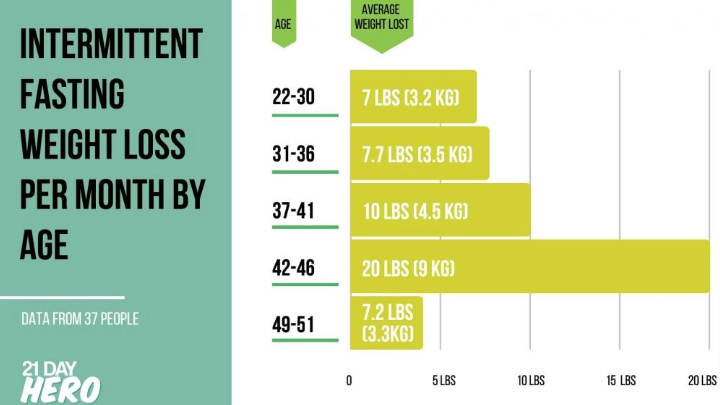
Final Words
I personally prefer the 16/8 fasting method. It allows me to eat 3 meals a day, which fits my workout and my life schedule. I prefer to eat my last meal around 6pm, then my first meal at 10am the next day. It seems to work for me, without going too hungry, and also getting enough protein and calories per meal in my diet.
Intermittent fasting is a great way to reach your wellness goals. Every individual is different and follows a different lifestyle. Based on your routine, metabolism, and eating pattern, you can choose the best schedule for your intermittent fasting.
Adapting to any kind of fasting becomes easy when you plan it according to your needs. If you are a beginner, start slowly and choose a smaller fasting window. Allow your body to adapt and gradually increase your fasting time frame. If you have any health concerns, discuss them with your doctor before choosing intermittent fasting.
A fasting routine becomes easy when you plan things well and act accordingly. Take up a 21-day intermittent fasting challenge to see how well you can adapt to the fasting lifestyle. You will receive complete guidance on how to begin fasting, daily inspiration, and tips. You can also join an exclusive community of like-minded people who share similar experiences. Join us!
Also need help fasting? Check out these Top 6 Fasting Mobile Apps we recommend to help you on your journey.
